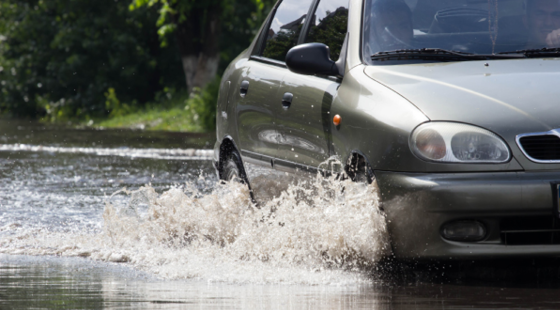
Generating funding to maintain and upgrade California’s aged and extensive flood management infrastructure is a key challenge facing the state, according to a report this month from the Legislative Analyst’s Office (LAO).
The flood management infrastructure was not designed to account for evolving statewide goals, scientific knowledge or conditions, notes the March 22 LAO report.
The funding challenge is especially great at the local level where state constitutional provisions constrain the ability to generate additional tax and assessment revenues.
Balancing flood risk with expanding population and development is another key challenge for both state and local governments, the report comments. With state population growth comes a push to develop into new areas, but development in flood-prone areas increases the potential for flood damage.
The report also cites “overlapping and fragmented” flood-related responsibilities among local, federal and state governments for complicating flood management efforts and making implementation of flood projects “especially protracted and difficult.”
2017 Flood Damage
Earlier this year, the Governor declared a state of emergency in 52 of the state’s 58 counties due to damage from winter storms and flood.
As the report points out, exceptionally high precipitation caused localized flooding, mudslides, flood warnings and road damage throughout the state. Erosion to the main and backup spillway at Oroville Dam led to a risk of catastrophic flooding and evacuation of nearly 200,000 residents.
Since 1992, every county in the state has been declared a federal disaster area at least once due to a flood. Estimates are that 7.3 million people (1 in 5 Californians), $575 billion worth of structure and crops valued at $7.5 billion are located in areas that have at least a 1 in 500 probability of flooding in any given year, according to the LAO report.
Benefits of Floods
Floods can have beneficial impacts for both humans and the environment in some cases. Examples cited in the report include replenishing groundwater basins, creating habitat for fish and wildlife, carrying and depositing sediments that improve agricultural productivity, and improving water quality by flushing out contaminants.
Flood management strategies often incorporate leaving floodplains undeveloped and encouraging flooding in certain areas.
Flood Management Approaches
Local, federal and state agencies have developed a variety of physical structures to convey and control water flows and floods. These structures include levees, weirs, detention basins, dams, seawalls and bypasses.
In West Sacramento an effort is underway to enhance floodplain capacity. Setting back 4 miles of the existing levee along the Sacramento River through the Southport project will not only expand the river’s width and allow greater access to its original floodplain, but also will create 152 acres of new riparian habitat.
Among strategies used by the Napa River/Napa Creek project was incorporating a dry bypass channel to provide a shortcut for fast-moving water that historically had overtopped the normal pathway of the river. The bypass, completed in 2015, flooded for the first time in February 2017, helping prevent a repeat of the widespread flooding in downtown Napa that occurred during the 2005 storms.
Funding Needs
It has been estimated that between $2 billion and $3 billion is spent each year statewide on flood management activities. The majority of the funding is generated and spent by local government entities, which hold the primary responsibility for managing flood risk. The federal and state governments each provide several hundred millions of dollars annually for flood management activities.
Several studies have estimated that reducing flood risk across the state will cost tens of billions of dollars above current expenditure levels over the next couple of decades:
• A 2013 report from the state Department of Water Resources (DWR) and U.S. Army Corps of Engineers estimated it will cost $52 billion for 836 flood management improvements and projects across the state that were in the planning or implementation stages at that time. The estimate did not include a time frame for the expenditures. The report also estimated another $100 billion might be needed to address unassessed flood risks for which specific projects are not yet in the planning or implementation stages.
• The American Society of Civil Engineers in 2012 gave the state’s levees and flood control infrastructure a “D.” Authors of the report card estimated it would cost an additional $2.8 billion a year for 10 years to make statewide levees and flood control systems safe enough to earn a “B.”
• In a 2017 update prepared by the DWR for adoption by the Central Valley Flood Protection Board (still in draft form), a portfolio of prioritized systemwide capital improvement is estimated to cost between $13 billion and $17 billion over 30 years. Another $5 billion is estimated as being needed over the same period for ongoing annual activities, such as planning, emergency management, and operations and maintenance.
The LAO report concludes that continuing the ongoing investment in flood-related efforts is essential as the state seeks to better manage its flood risk.
The full report is available at www.lao.ca.gov.

